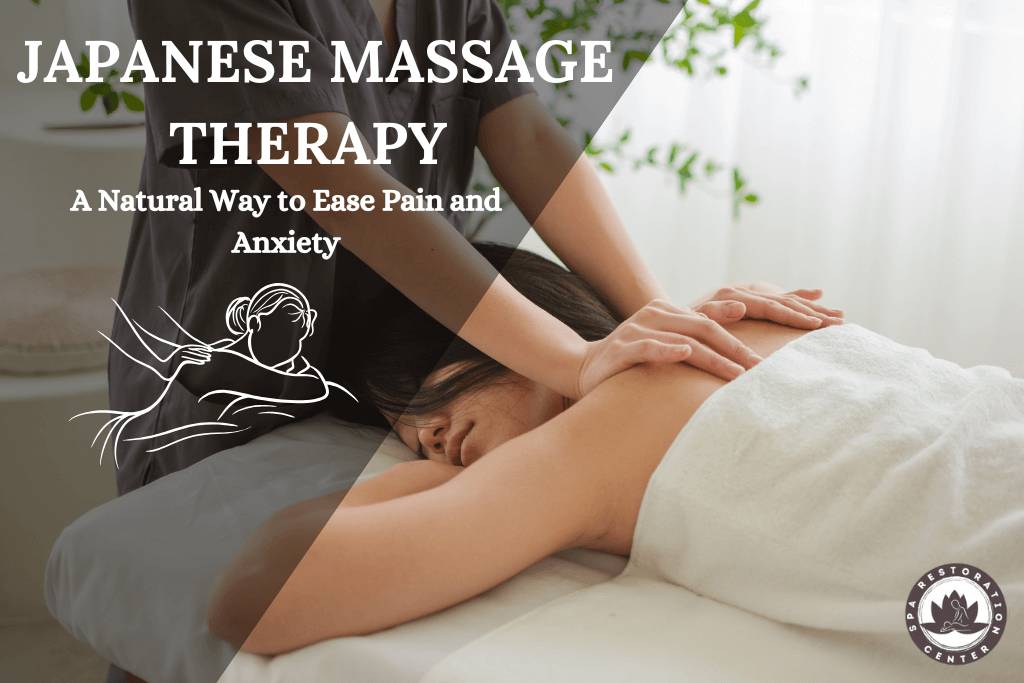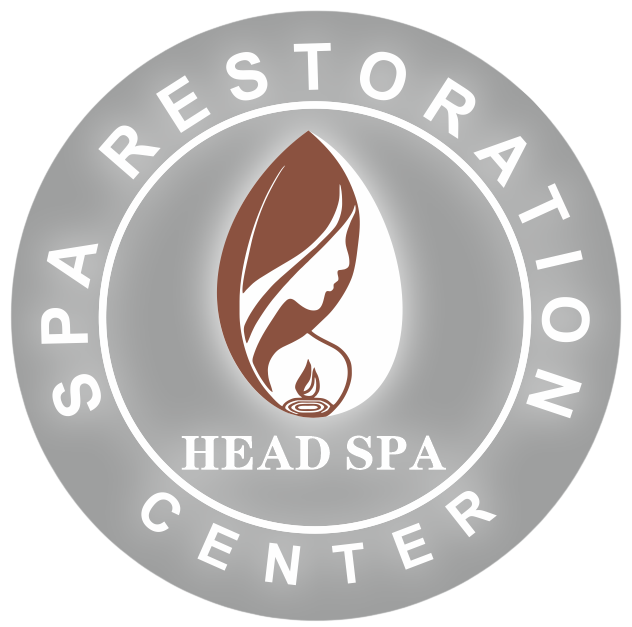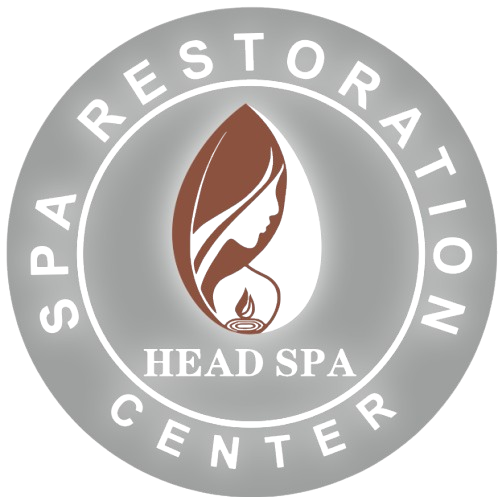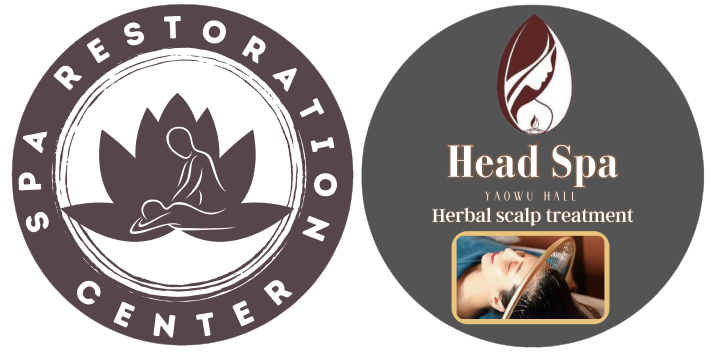
JAPANESE MASSAGE THERAPY FOR REDUCING PAIN AND ANXIETY
Daily stress and strain can lead to the accumulation of muscle pain in our body. Whether due to long working hours, poor posture, or intense physical activities, it is common to experience muscle discomfort. In Japan, an ancient therapy known as “Shiatsu” has been used for centuries as a powerful tool to relieve muscle pain and improve overall health.
What is Japanese Massage Therapy?
Japanese massage therapy, primarily known as “Anma” or “Shiatsu,” is an ancient healing art that combines different massage and pressure techniques, taking its roots in traditional Chinese medicine. It offers an effective approach to relieve muscle pain and improve overall health.
Both techniques belong to traditional Japanese practice but vary in execution.
Anma:
Anma Looks much more like the type of massage we are used to, consisting of gentle rocking, kneading, and stroking motions as well as percussive movements. The aim here is to increase blood flow to the tissues beneath the surface, which is why this technique can feel intense at times.
Shiatsu:
Goes in depth over the acupressure points and focuses on the use of thumbs, fingers, and palms to massage those areas. Unlike Anma, Shiatsu does not use any oils and is instead conducted with the patient fully clothed.
If you have any persistent or chronic pain in your muscles and want to unwind, we would recommend some traditional Japanese methods. Look for a qualified practitioner knowledgeable enough to tailor a massage to your particular requirements.
Shiatsu: A Japanese Massage Against Stress
Combating all this is not easy, especially if the cause of the discomfort is unknown. A great help that has the advantage of producing an immediate relief effect from the discomfort and leading to relaxation in a few minutes is shiatsu, the Japanese massage of well-being.
Shiatsu is a deep, painless, pleasantly relaxing and very effective massage. It is based on applying pressure to specific points all over the body. In Japanese, the word ‘shi’ means ‘fingers’, and ‘atsu’ means ‘pressure’. The basic Shiatsu Yasuragi Sequence is the most complete in the world, with over 2400 pressure points.
Shiatsu More than just Finger Pressure.
Shiatsu is a technique of Japanese origin that uses pressure from the fingers and hands, though practitioners may also use elbows and knees when appropriate. The pressure on the body stimulates or sedates (as appropriate) the physiological functions. Using this method, it assists in encouraging the body’s natural self-healing ability.
Speed, Intensity, Frequency
Depending on the intensity, speed or frequency of the pressure, the body reacts differently:
- A mild-moderate intensity stimulus facilitates the start of functional activity
- A moderate-medium intensity stimulus increases functional activity
- A medium-strong intensity stimulus inhibits certain functions
- A strong-very strong stimulus ends up stopping them
If the intensity stimulus is combined with speed and frequency, we obtain a large number of possible treatments. To choose the most appropriate combination, great skill from the shiatsu specialist is essential. At Shiatsu Yasuragi our specialists are teachers from the Institute, all trained in Japan and with more than 20 years of experience.

Different Approaches To Japanese Massage That Works
Japanese massage consists of multiple techniques focusing on particular essential parts and meridians in the body like:
- Pressing: Can be executed in several intensities to either assist or suppress a body’s function.
- Stroking: Helps with relaxation and increases the blood flow in the body.
- Grasping: Very popular in Anma to help improve the blood circulation in the deep tissues.
- Kneading: Relaxes and soothes muscle tightness by going deeply into muscle tissues.
- Tapping: Fast movements to increase blood flow.
- Shaking: Slow gentle movements to relieve tightness around joints and muscles.
Benefits of Shiatsu
Shiatsu schools and specialists in Japan list a number of benefits of applying shiatsu
With just a few gentle pressures
> Stimulates the body’s innate self-healing capacity.
> Balances the body’s physiological systems, improving quality of life.
> Produces deep relaxation, physical, mental and emotional balance.
> Restores harmony in the body.
> Increases vitality.
> Prevents the accumulation of fatigue.
> Promotes sleep.
> Improves the skin.
> It is completely painless.
> Eliminates physical, mental and emotional stress.
> Maintains and improves the overall functioning of the body.
> Stimulates the secretion of endorphins, hormones that produce a sedative effect and relieve pain.
> Helps eliminate toxins, cleanses and purifies the body.
> It has no side effects.
How Japanese massage works
Japanese massage offers a number of benefits, especially when it comes to relieving muscle pain. Below we will see its many advantages and benefits:
Relief of muscle tension:
Through the correct technique, tense and contracted muscles can be relaxed, resulting in a reduction in pain and improved mobility. On this last point, it is important to note that massage also has a positive effect on the multi-joint level, to improve mobility and general physical condition.
Improved blood circulation:
The different movements and techniques of Japanese massage stimulate blood circulation; this helps to bring nutrients and oxygen to the muscle tissues, thus accelerating their recovery.
Deep relaxation:
Massage promotes the release of hormones that are beneficial for our mood and health. One of these hormones is endorphins, which induce a general feeling of relaxation and well-being.
Improving body posture:
By relaxing the muscles and correcting posture, we help prevent future muscle tension and avoid problems in the future.
Stress reduction:
Massage is an excellent way to release accumulated stress in the body and mind, it favorably affects a better mood and greater mental clarity to positively face our daily lives.
Energy balancing:
Working along the body’s meridians helps to balance energy flow, addressing blockages that may contribute to physical or emotional discomfort.
Important Aspects in Japanese Massage Therapy
Have you ever thought about what are the most important aspects to take into account when performing and receiving a good Japanese massage? Below we will tell you some interesting facts and how they affect the quality of this ancient practice.

Massage and pressure as the basis of a good Japanese massage technique:
There are an assortment of techniques and body movements practitioners and masseurs noted use in order to massage and apply effective pressure using several body parts.
- Hands and fingers: For gentle manipulation and effective, targeted point work
- Elbows: Focused pressure on deeper tissues and to
- Knees: Broader pressure application, floor techniques also use this.
Governed by the means what the muscles have blocked within enable boundaries and more stiff form moving these movements serve several functions:
- Gets rid of muscular tension and muscular knots
- Increases the degree of blood supply in the body
- Gets rid of energy blockages along meridian way
Although therapists may personalize the strategy towards each patient’s requirements, a fully developed massage from Japan integrates these approaches systematically for optimum outcomes. They will select the means of effectiveness based on the degree of satisfaction you want and what pain you feel.
Acupressure points:
According to the meridians theory of the Traditional Chinese Medicine system, the acupressure points are one of the most important elements used in Japanese massage.
- Origin: These points have been identified and stimulated for centuries in Eastern healing practices
- Professional application: Trained therapists identify and work on specific key points throughout the body
- Energy flow: Stimulating these points helps create better distribution of the body’s natural energy
The main objectives that should be achieved through acupressure are:
- Correcting imbalances that develop over time
- Promoting healing in affected body areas
- Restoring proper energy circulation
- Addressing both symptoms and underlying causes
When properly stimulated, these points can trigger the body’s self-healing mechanisms and help restore balance to multiple body systems.
Essential oils:
Aromatic essential oils serve multiple purposes in Japanese massage therapy:
- Enhancing relaxation and overall well-being of the recipient
- Creating a calming, soothing atmosphere in the treatment space
- Promoting deeper therapeutic benefits through aromatherapy
- Facilitating smoother massage movements when applied to the skin
The carefully selected scents contribute to a more conducive environment for effective Japanese massage therapy.
Light and comfortable clothing:
It is advisable to wear light and comfortable clothing during the session to facilitate access to the areas of the body that require treatment. It is very common to perform the massage with the body uncovered, in order to apply oils and other products to facilitate muscle stimulation. In any case, it is recommended that both the masseuse and the client wear loose clothing.
Breathing and meditation
Did you know about the connection between mind and body through relaxation and meditation? Japanese massage has the power to relax the person receiving it, to the point of making breathing and meditation work together to help reduce cortisol levels.
Other benefits:
Just a few sessions are enough to notice the benefits of this Japanese technique; relief from muscle pain, tension, fatigue, stress, insomnia, circulatory problems… Remember that it will also help you maintain a better mood and promote relaxation through a state of meditation.
Japanese Oil Massage Benefits
While traditional Shiatsu is performed without oils, other Japanese massage styles incorporate them for specific benefits:
- The use of rice bran, camellia, or sesame oils in Japanese massage helps nourish the skin while allowing smooth technique application
- Oil-based techniques allow for smoother, more flowing movements and less friction during deeper work
- Japanese hot oil massage combines warming properties with therapeutic touch to enhance circulation
- Essential oils like yuzu, hinoki (cypress), and shiso are uniquely Japanese and offer aromatherapeutic benefits
- Japanese oil massage is particularly beneficial for dry skin, improving circulation, and releasing deeply held tension
These oil-based methods are often used in Japanese spa settings, where the focus expands beyond therapeutic work to include elements of relaxation and skin care.
The Language of Japanese Massage
In Japanese, there are specific terminologies that convey features of its massage technique. Learning them will deepen your appreciation for this art:
Ki/Qi: A life force that passes through specific channels and whose meridian is usually used in Japanese bodywork.
Tsubo: Channels within meridians that serve as a blockage for energy and are found on pressure points.
Hara: The abdominal area is believed by Japanese healing practitioners to be the center of energy and spirit.
Kata: Combination of defined movements as equal to a form-in-stance within the framework of traditional massages.
Kenbiki: The pumping and pulling movements which allow for the formation of intra-joint cavities and relieve facial tension.
Yuki: Gentle touch that conveys soft strength during healing the patient and practitioner.
Types of Japanese Massage
Most people think that the only forms of massage from Japan are Shiatsu and Anma, but the country actually has a plethora of bodywork therapies that aid holistic health and wellness.
Shiatsu: The most well-known form internationally, achieved by applying finger pressure on precise body points.
Anma: An initial form of modern massage developed in Japan, acknowledged as one of the oldest techniques, regarded as the source of many Asian massage techniques.
Kobido: The ancient “Imperial Way of Beauty” facial massage, which dates back to 1472 performed on facial muscles for rejuvenation. Also called “The natural facelift” because of its non-surgical nature.
Jin Shin Jyutsu: A passive and gentle form of touch therapy system achieved through 26 safety energy locks which help in balancing energy.
Ashiatsu: Deep, broad pressure massage typically done with the feet by the therapist holding on to overhead bars for support.
Ampuku: A traditional form of abdominal massage concentrating on the hara (belly) area, practicing the Japanese art of chi nei tsang (internal organ massage), which promotes organ health and improves digestion.
Seitai: A system of bodywork that seeks to address and redress postural distortions and rest the body’s natural mechanics.
Japanese Massage Types Compared
| Aspect | Shiatsu | Anma | Kobido | Ampuku |
| Approach | Pressure-based acupressure | More vigorous massage with gripping | Facial massage with rhythmic movements | Focused abdominal therapy |
| Use of oils | Typically dry | May use oils | Minimal oil or creams | Typically dry |
| Clothing | Usually performed through clothing | May be performed on bare skin | Face exposed | Thin clothing over abdomen |
| Focus | Energy meridians and pressure points | Muscle tension and blood circulation | Facial rejuvenation and lymphatic drainage | Digestive health and core energy |
| Intensity | Varies from gentle to firm | Generally more vigorous | Precise and varied | Gentle to moderate |
| Primary techniques | Pressing, holding, stretching | Long strokes, kneading, percussion | Tapping, drainage, lifting techniques | Circular pressure, vibration |
Conclusions
We assure you of unparalleled service and attention in case you are searching for a spa center offering Japanese massage therapy in Arlington, VA.
From the soothing pressure of Shiatsu to the more active movements of Anma, our qualified therapists will modify the treatment to suit your individual needs. Consult with us today, and we can guide you on your journey toward better health.
Frequently Asked Questions About Japanese Massage
What is Japanese massage and how does it differ from other types?
Shiatsu and Anma are all techniques encompassed under the category of a Japanese massage. While Western massage focuses mainly on muscles, Japanese massage works with energy pathways (meridians) and pressure points. It usually uses less oil than Swedish massage and includes more rhythmic pressure points. Similar to Thai massage, Japanese massage incorporates stretching, but there are different concepts behind the energy moving through the body in each culture.
What does “Japanese massage that means finger pressure” refer to?
This is the Shiatsu, “shi” means finger” and” atsu” means pressure in Japanese. Shiatsu relies on mostly finger pressure to access certain points on the body, although practitioners will use their palms, knuckles, elbows, and occasionally their knees and feet to reach different points with varying degrees of pressure.
What are the benefits of Japanese oil massage?
Japanese oil massage is a combination of traditional massage techniques and the use of oil which when used offers hydrated skin, lesser friction for deeper work, better circulation, added therapeutic effects when essential oils are utilized, and total relaxation. Camellia, rice bran, and sesame oils are traditional as well as valued for their nourishing abilities and lightweight texture.
What is a traditional Japanese massage?
Traditional Japanese style massage has existed for over 1000 years dating back to when the Chinese medicine practices were introduced in Japan around 700-800 CE. This style called Anma is believed to have developed during the Edo period (1603-1868). Traditional Japanese style massage focuses on particular sequences, kata, to energize the body while releasing physical tension. Historically, it has been performed by blind people who were thought to develop more sensitivity in their hands.
What happens during a Japanese body massage?
For a Japanese body massage, your clothes may or may not come off, as you are massaged through shiatsu. You will either lie down on a massage table or a futon mat. Rhythmic touches are then used alongside stretching movements, joint mobilization, and deep focus on tense regions of your body to give a sense of deep relaxation and energization. An element that sets this massage apart and makes it more unique is the focus and attention that is given to the abdomen, the area known as hara.
How is Japanese relaxing massage different from therapeutic massage?
Japanese relaxing massage (sometimes called a modified form of Anma) involves the use of flowing, gentle strokes with moderate pressure applied to bring the body into a deep state of relaxation. It avoids specific meridian work and focuses more on relaxation and stress relief. Japanese therapeutic massage, on the other hand, is an extension of the Japanese relaxing massage where more strategies are employed such as diagnostics for identifying the energy imbalance, and special flowing techniques are used to aid in restoring the proper energy flow into the body. They both serve a purpose, however, the relaxing one puts more emphasis on non-therapeutic, passive bodywork, and the therapeutic one seeks to actively resolve particular body ailments.
What should I wear for a Japanese massage?
For traditional Shiatsu, wear comfortable clothing such as cotton pants and a t-shirt. Comfortable tops and bottoms with good breathing properties allow muscles to loosen as the practitioner performs stretches and good working pressure is applied without clothing much restriction. For the oil based Japanese massage, feel at ease to undress as oil will be poured onto the skin and professional draping will be conducted during the session. Always take out jewelry, and come in clean, but not overly scented with perfumes or lotions.
How often should I get a Japanese massage for best results?
For overall wellness, managing stress, and relaxation, one session a month should be scheduled. If one is dealing with back pain or stress in any form, weekly sessions for 4-6 weeks is a good start. Athletes may find enhanced performance with maintenance massages every 1 or 2 weeks. Post surgery or after an injury, the patient might need to attend sessions twice a week and gradually reduce frequency as healing progresses. Make sure to talk to your specialist to help you figure out a plan that aligns with your personal health objectives as practitioners can make general recommendations based on specific circumstances.
Is Japanese massage painful?
Authentic Japanese massage could occasionally be overwhelming at some points, though you should not be in pain while at an authentic of these massage styles. Everyone’s “good pain” is contingent upon their comfort with a place that is being worked on. In Shiatsu, pressure can be strong though it is ideal if you find it easy to breathe and be able to comfortably relax. Blunt pain of any kind should be communicated straight away to the therapist’s attention so they can take steps to solve the issue with their approach. The notion of “comfortable discomfort” is used to describe the soft supporting pressure that rests inside the bounds of what is feasible for one’s body to endure.
What makes Japanese massage therapy effective for reducing pain and anxiety?
Japanese massage therapy diminishes pain and anxiety through four main ways. First, applying pressure to specific areas of the body releases endorphins which act as natural pain relievers. Second, the massage routine has a rhythm and flow which stimulates the parasympathetic nervous system, causing a decrease in cortisol and stress. Third, the movement increases blood flow which carries essential nutrients to tissues and also their waste. Lastly, restoring energy balance is essential for self-healing. Additionally, the therapist’s mindful presence helps to strengthen the client’s sense of safety and physical and emotional tension can be let go freely.



Leave a comment